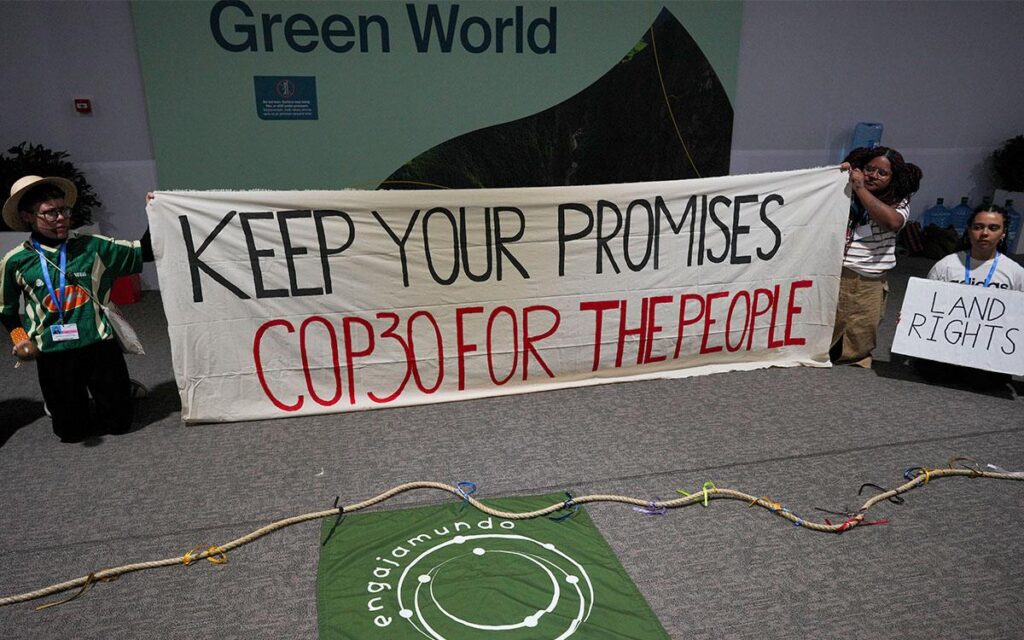The Next UN Climate Change Conference: A Decade After the Paris Agreement
Protestors at COP29 in Baku, Azerbaijan, on November 16, 2024, urged leaders to “keep your promises” as discussions on global climate adaptation funding stalled. | Photo by Peter Dejong/AP
The 2025 United Nations Climate Change Conference (COP30), set to take place in Belém, Brazil, follows the stagnation of COP29 negotiations. Brazil, hosting nearly 60% of the Amazon rainforest, is a natural choice for this pivotal event. Belém, a city of 1.3 million, is integral to discussions about forest conservation, climate change adaptation, and financing for developing countries.
Despite being a previous host of the 1992 Earth Summit, expectations for Belém are low after the stalemate at COP29. The Brazilian government has pledged $815 million for infrastructure improvements, but Wendell Andrade of the Talanoa Institute warns the conditions won’t match those of cities like São Paulo.
Concerns about Belém’s readiness include hotel capacity and infrastructure. However, a lack of sanitation remains a critical issue, with 91% of Pará’s population lacking proper sewage systems. The city faces high dropout rates and low afforestation rates.
The government promotes Pará’s economic contributions, such as agricultural production, but its environmental challenges, including high deforestation rates and threats to environmentalists, are often overlooked. Beto Marubo, an Indigenous leader, highlights the dangers faced by activists like Sister Dorothy Stang.
Indigenous activists are vital to COP30 discussions, yet their participation is questioned. Andrade argues that inviting a few representatives does not adequately represent diverse Indigenous voices.
With climate funding unresolved at COP29, the focus remains on adaptation funding and transitioning away from fossil fuels. Brazil, Latin America’s largest oil producer, has promised not to avoid these topics, but faces skepticism from climate activists.
As COP30 approaches, concerns grow about backsliding on the Paris Agreement commitments. US President-elect Donald Trump’s stance on climate change and plans to repeal climate policies raise doubts about the effectiveness of upcoming negotiations.
Andrade emphasizes the importance of addressing climate change adaptation in cities across the Amazon, noting that this is a critical moment to educate and implement better public policy. However, progress remains limited.
Original Story at www.sierraclub.org
